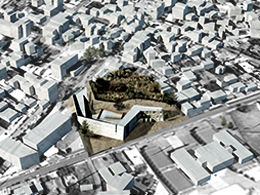STUDENTS PROJECTS
PROJECTS2013
Student: Gesthimani Roumpani
Supervisor: Sofia Tsiraki
Advisors: Kostas Karadimas, Rena Klampatsea
School of Architecture, National Technical University of Athens
Presentation date: November 12th, 2014
This diploma thesis deals with a subject which has during the last years evolved into a crucial need of the area, directly related to the Olympia International Film Festival for Children and Young People. This Festival has been taking place in Pyrgos, the capital city of Ilia Prefecture since 1997 and is nowadays considered the best of its kind in Europe and among the best in the world. The "vision" for the centre concerns a place that will be operating all year long and at the same time be the Festival's base. All the stages of this project have strong experiential influence.
THE PLACE
The city of Pyrgos is located where the ancient town of Dyspontio once was. It came to being during the years of the Ottoman Empire, taking its name from the tower ("pyrgos") erected by the area's "Bey", Georgios Tsernotas.
Today the city lies on seven hills, which lend their names to different areas.
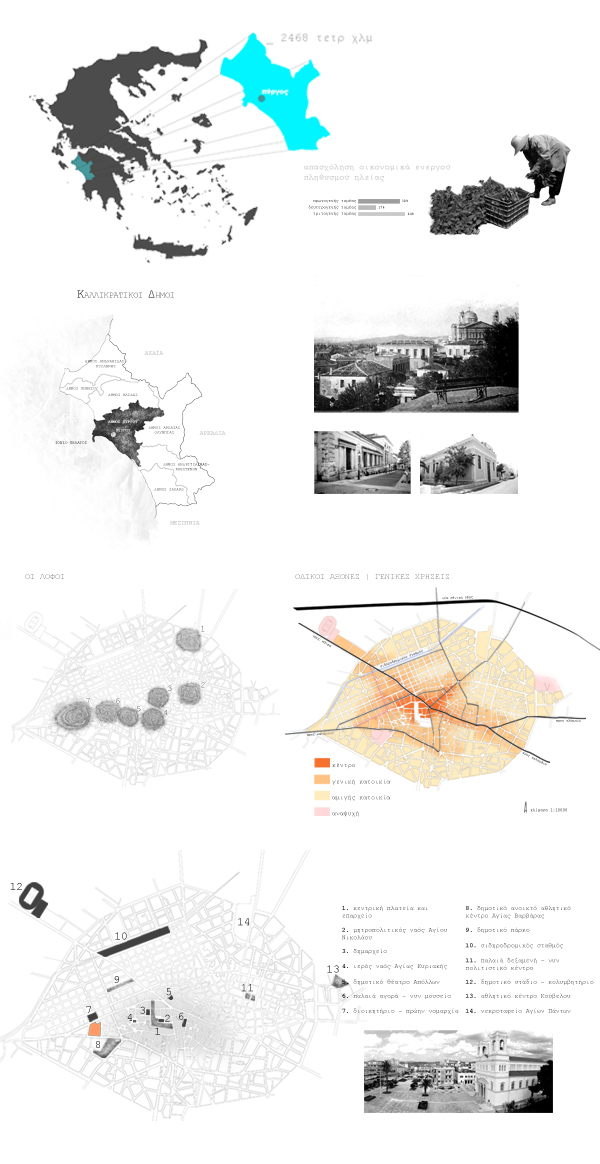
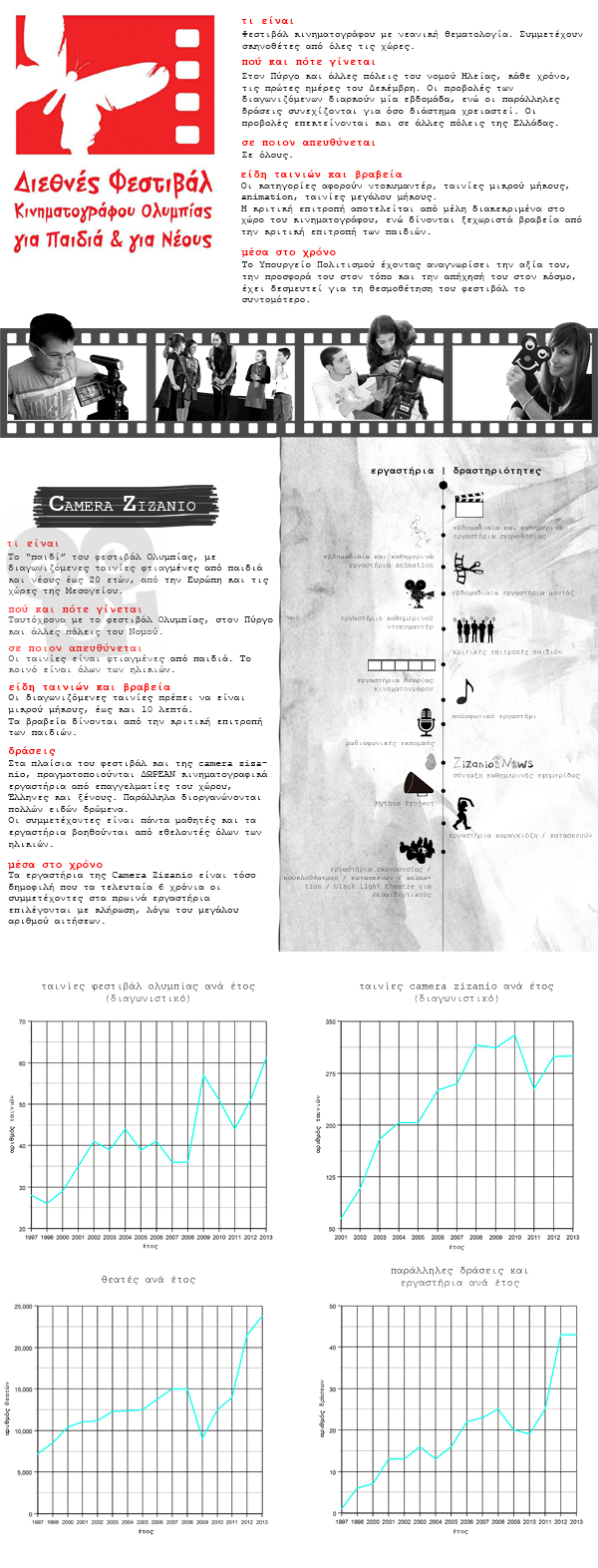
The size and impact of the Festival's activities were already apparent in 2006, when representatives of cinematography organizations from 23 European countries signed a petition for the creation of a European centre for audiovisual education based in Pyrgos. Ever since, all the appropriate actions have been performed and the Ministry of Culture is expected to institutionalize the event soon.
LACK OF SPACE AND ACTIVITY DISPERSION
The dispersion of the cultural venues available for the events and activities depending on the discretion of the holders together with the expected dispersion of the education facilities render the daily transportation of the students more dangerous.
Along with the dispersion, the biggest problem is the scarcity of space and the non-met requirements for the most specialized activities. The most typical example is the 200 - seat screening room, which constantly hosts double the number of viewers.
Moving on to the design of a "home" for the Festival, it needs to be made clear that in no case is it pursued to exclude the rest of the city from the activities. After all, it is the city that gives life to the Festival.
As shown below, we start from a base - a school, a hotel hosting participants, or another city from which students are arriving. The participants are collected from the base in order to find themselves in the "capacitor" - our centre that is. There is a continuous bilateral filtering between the centre and the city in order to achieve the desired diffusion in the city, but in a more designed way. The total of the activities' results gather again in the centre.
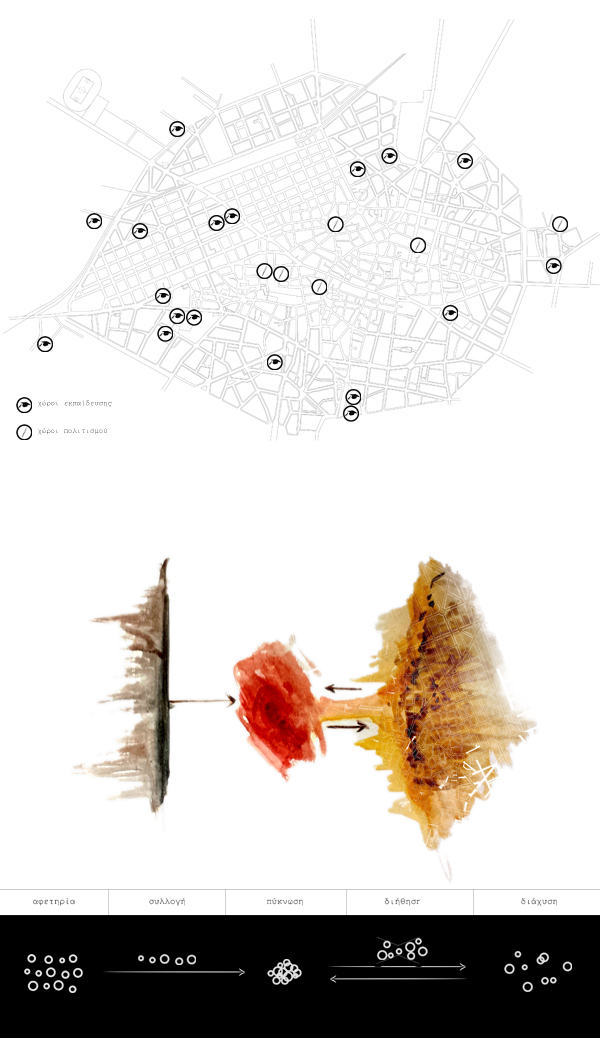
MEDIA LITERACY CENTRE
The suggested centre will not only be the base of our Festival, but mostly a space to organize seminars and workshops on cinematography, screenings and more events, as the Festival already does throughout the year in Greece and abroad. In other words, the current activity of the Festival is in fact a mini version of the centre's future activity, which will reinforce Pyrgos' place in cinema education.
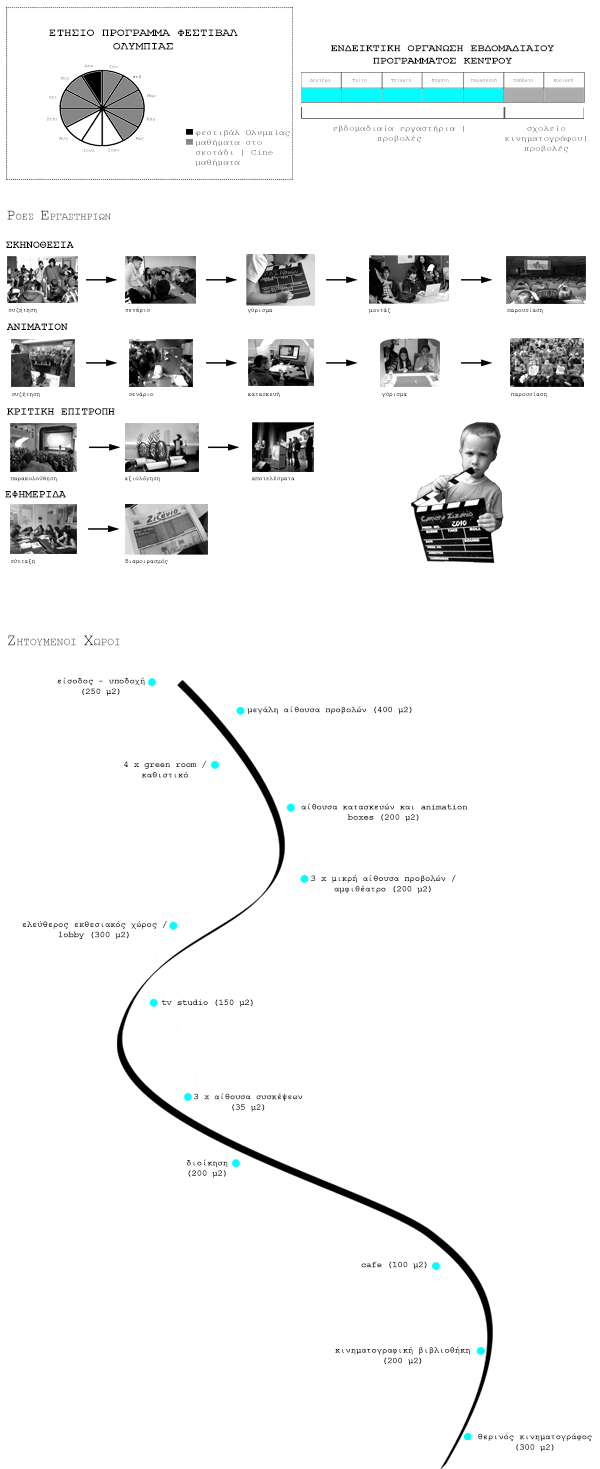
The place selected for the centre to be designed consists of three municipal plots, one of which has been characterized as "public space" in the city plan. It is located in the city centre, ensuring easy access for both pedestrians and vehicles. The height difference between the two streets that have access to the site is at 7.5m. It is essential to mention that residents of the area have through the years created an unofficial passage through the site.
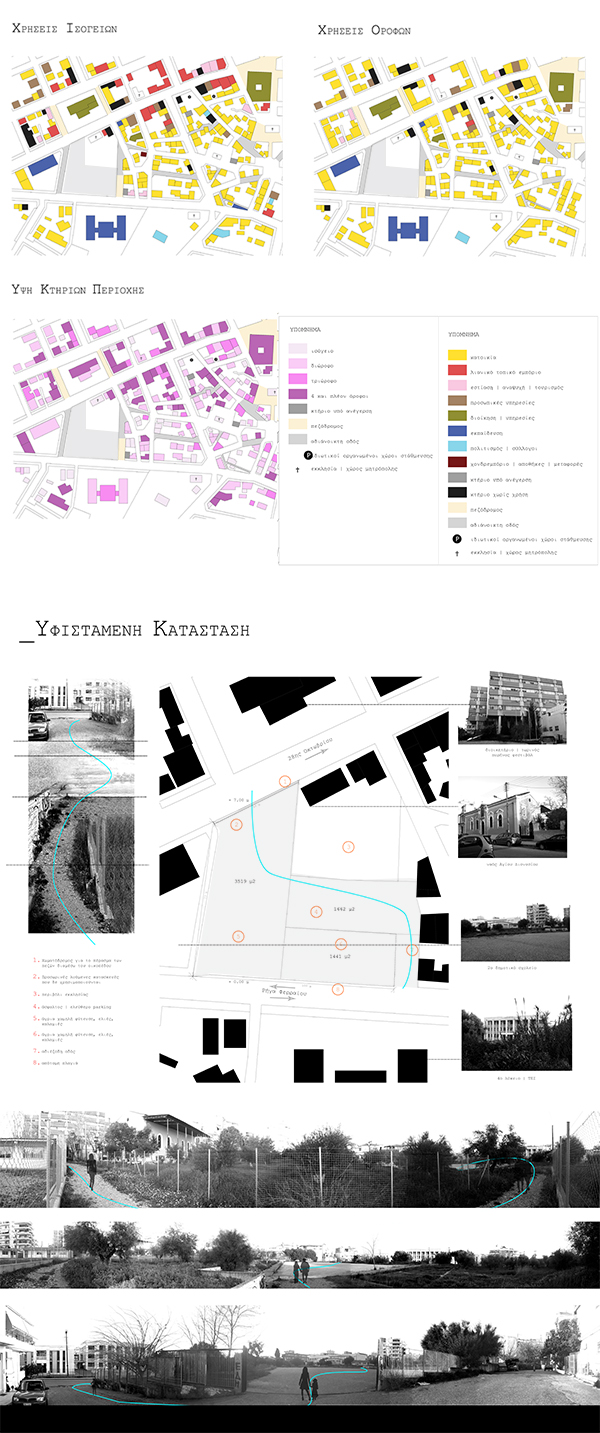
ANALYSIS - RESEARCH
After the spatial analysis of the area for pedestrians and vehicles, we arrive at the following conclusions:
1. The main entrance of the building should be oriented to the North, where most pedestrians will arrive from.
2. Vehicles will refer to the street south of the site.
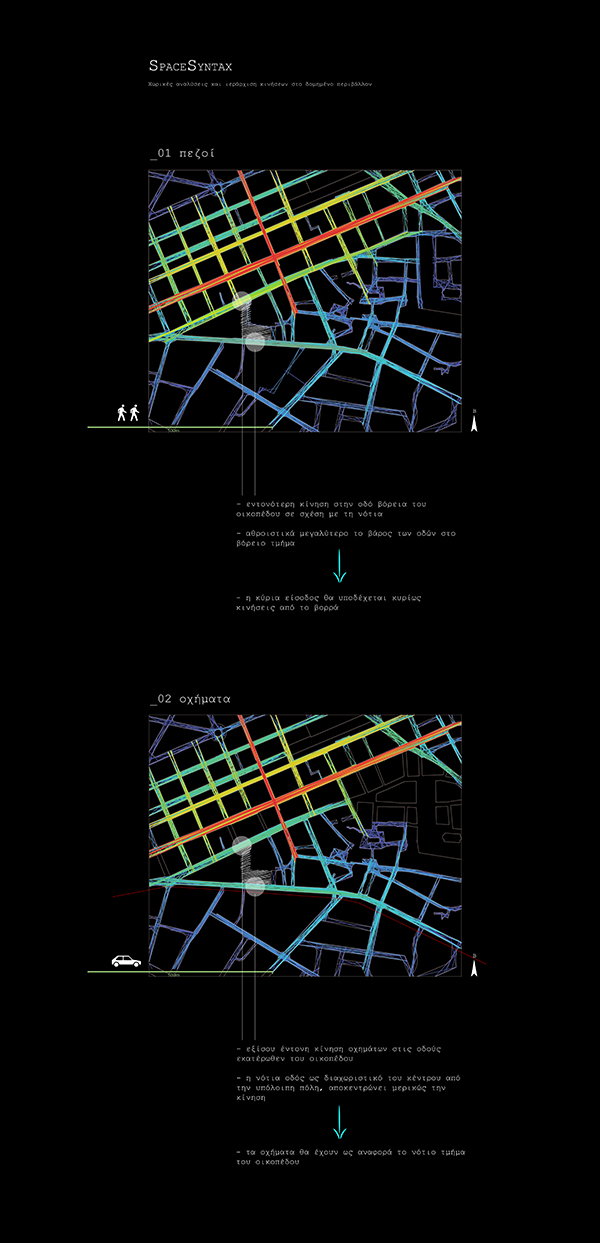
After the 3-D visualization of the site's terrain and the safe assumption that the main movement on the site is "downwards", a research with the help of grasshopper is conducted in order to lead us to some further conclusions for the centre's creation.

Having a series of multiple possible nerves we select the most suitable according to the built environment's analogies.
At the level of a diagrammatic top view, we combine the conclusions above with some specific goals. Combining these with the building program helps us decide the final shape of the building.
The indoor movement is diffused among the most important sections of the centre, maintaining a spiral form around the screening room. The secondary uses are placed at the end of the nerve, while vertical movement connects them to the rest of the building.
After multiplying and transforming the same nerve, we divide the forecourt into three zones: one that integrates our site with the church's backyard, a transitional zone with low planting and the main movement zone. The main movement zone coincides with the current route of the locals through the site, but also with the strongest flow of the research above.

THE PROPOSAL
The final proposal for the media literacy centre is characterized by a robust shape from bare concrete gradually emerging from the ground to result in a structural surge in the southern part. This sharp-edged shape embraces a wood-coated prism that hosts the screening rooms and the open-air cinema. Entering the site from the North, there is the option of ascending to the building's terrace, or continue descending and either cross the forecourt or enter the building.
The alternation of soft and hard borders on the outer shell contributes to the extroversion towards our backyard and at the same time stands up against specific hostile irreversible manipulations of the built environment.
The sharp edges on the southern street together with the roughness of the concrete allow for the building to be imprinted on the eye of the passing vehicles, thus intensifying its purpose as a landmark.
The hard facades express an idea of densification and sparseness of unequal square openings. A similar logic is used for the panels on the soft facades, whose use will be double: create shade during the day, and be grouped during the night in order to form screening LED panels, advertising the current event of the centre.

In an overall observation of the final proposal, the building manages besides its size to maintain the proportions of the built environment and smoothly be integrated with it. Reinforcing the existing vegetation with a big forecourt that lets the neighboring residences breathe, a green core is created in the city ready to welcome the centre's guest. A centre which undoubtedly is the most important development project that could be built in the city of Pyrgos.
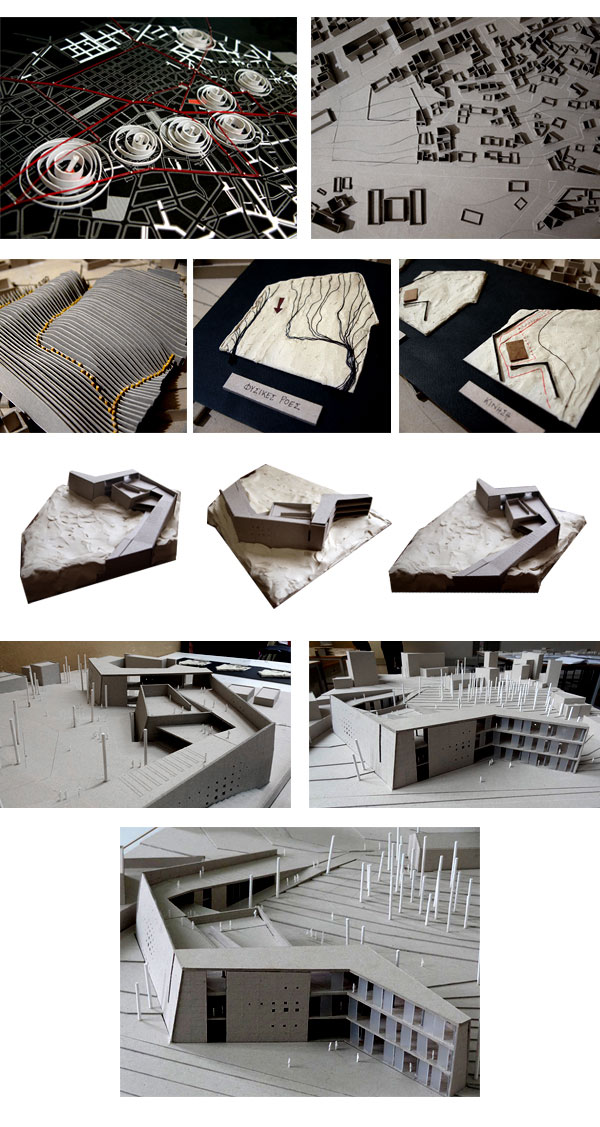
Related articles:
- Architecture-cinema ( 12 October, 2009 )
- Public School of Cinema ( 12 March, 2011 )
